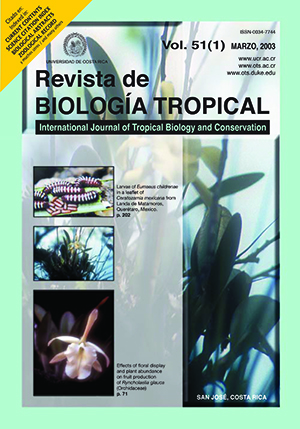Abstract
The longline hooks suspension depth was estimated using the Mechanic Imitation of Flexible Systems method. The vertical distribution of tunas and billfish was determined by the relative abundance index, obtained from the catch by 11 to 25 m -long longline vessels, -based at Cumaná, Venezuela, South-eastern Caribbean Sea in depths of 65 to 142 m. The CPUE was evaluated per species, according to depth. High values were found for most of the captured species in the layer from 105 to 125 m. Yellowfin tuna (Thunnus albacares) showed the highest yield (3.37 fish/100 hooks) and blue marlin (Makaira nigricans) the lowest (0.04 fish/100 hooks). However, the statistical comparison did not allow to reject the hypothesis of lack of depth efect (Kruskal-Wallis p>.05), and demonstrated a homogeneous distribution of yellowfin tuna (Thunnus albacares), albacore (Thunnus alalunga), bigeye tuna (Thunnus obesus), sailfish (Istiophorus albicans), white marlin (Tetrapturus albidus) and blue marlin (Makaira nigricans) in the water column. The conclusion is that fish concentration in the Southern border of the Caribbean Sea is possibly due to several hydroclimatic factors –which affect tuna and billfish catching- such as water temperature and disolved oxigen concentration which limit the distribution according to depth.##plugins.facebook.comentarios##

This work is licensed under a Creative Commons Attribution 4.0 International License.
Copyright (c) 2003 Revista de Biología Tropical
Downloads
Download data is not yet available.


